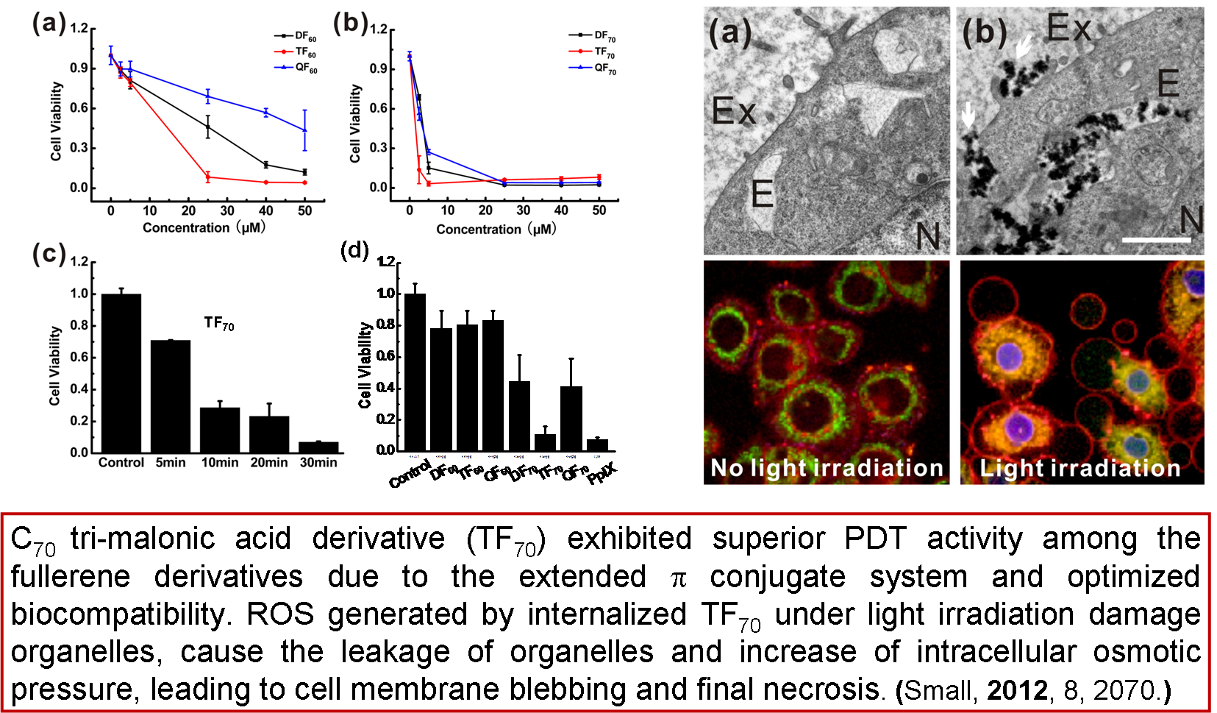|
It is well known that pristine fullerenes are highly hydrophobic and tend to aggregate in aqueous solution once escaped from encapsulation, which will limit their application in PDT. Therefore, the development of water-soluble and stable fullerene derivatives as a new type of photosensitizer with efficient ROS production is necessary. We evaluate the efficiency of various types of water-soluble carboxylfullerenes as photosensitizer and investigate the mechanism involved in the photocytotoxicity. Three different malonic acid modified fullerenes (di-malonic acid modified fullerenes (DF), tri-malonic acid modified fullerenes (TF) and quadri-malonic acid modified fullerenes (QF)), as well as different cage sizes (C60 and C70) were prepared and evaluated their photodynamic activity on Hela cells. The results indicated that malonic acid modified C70 fullerenes (C70-carboxylfullerenes) is an efficient photosensitizer, which exhibit marked photoinduced cell death while irradiated by visible light (400-700 nm). The efficiency of photo-induced cytotoxicity depends on both the modification on the cage and the cage size (C60/C70). More interestingly, a unique phenomenon of cell death induced by the carboxylfullerenes under light irradiation was observed. The cell death is mediated by elevated intracellular ROS, accompanied by membrane blebbing, which is different from the commonly used porphyrin-based photosensitizer.[16] The possible phototoxicity mechanism was proposed for the fullerenes-induced cell death under light irradiation. (DOI: 10.1002/small).
 |

